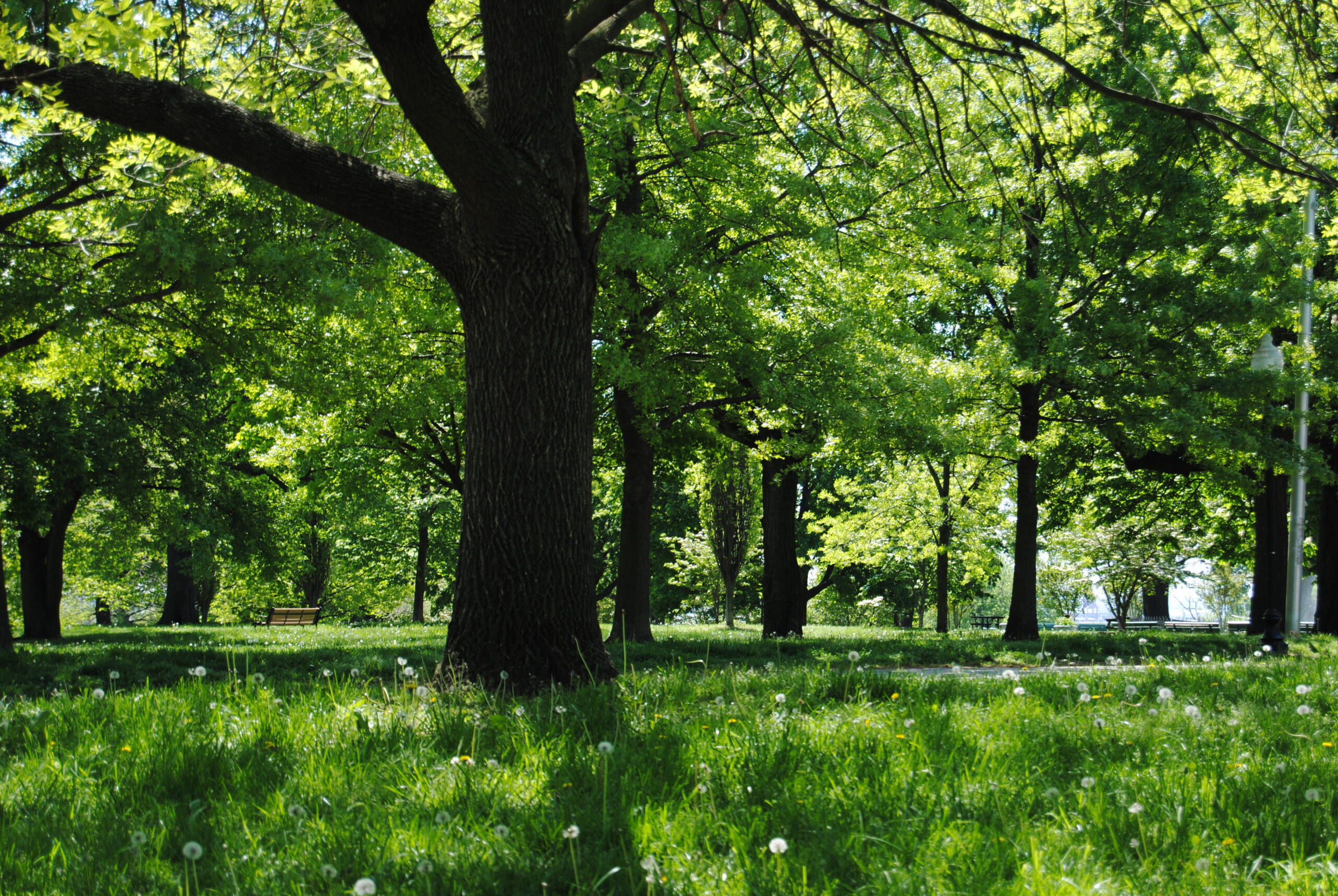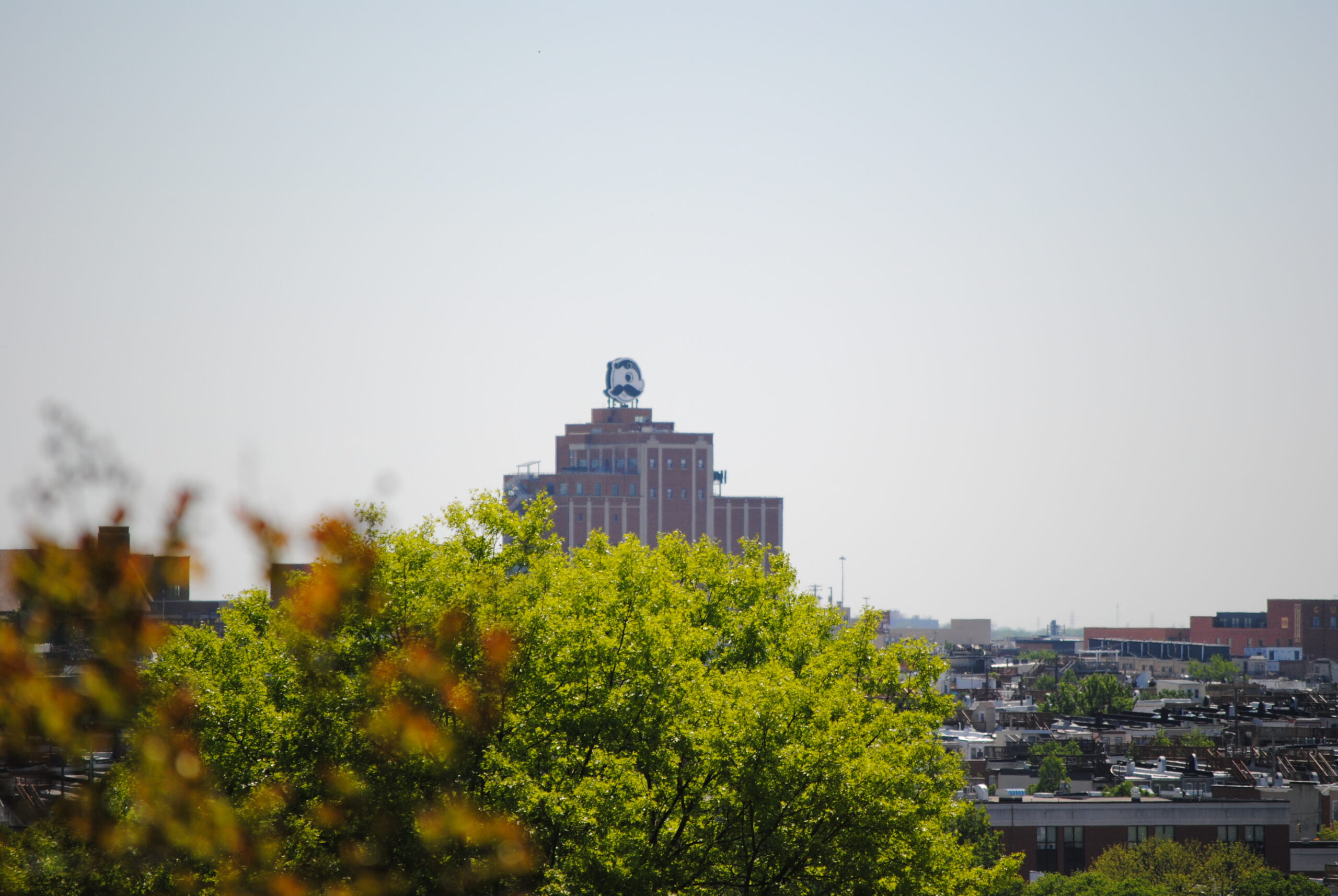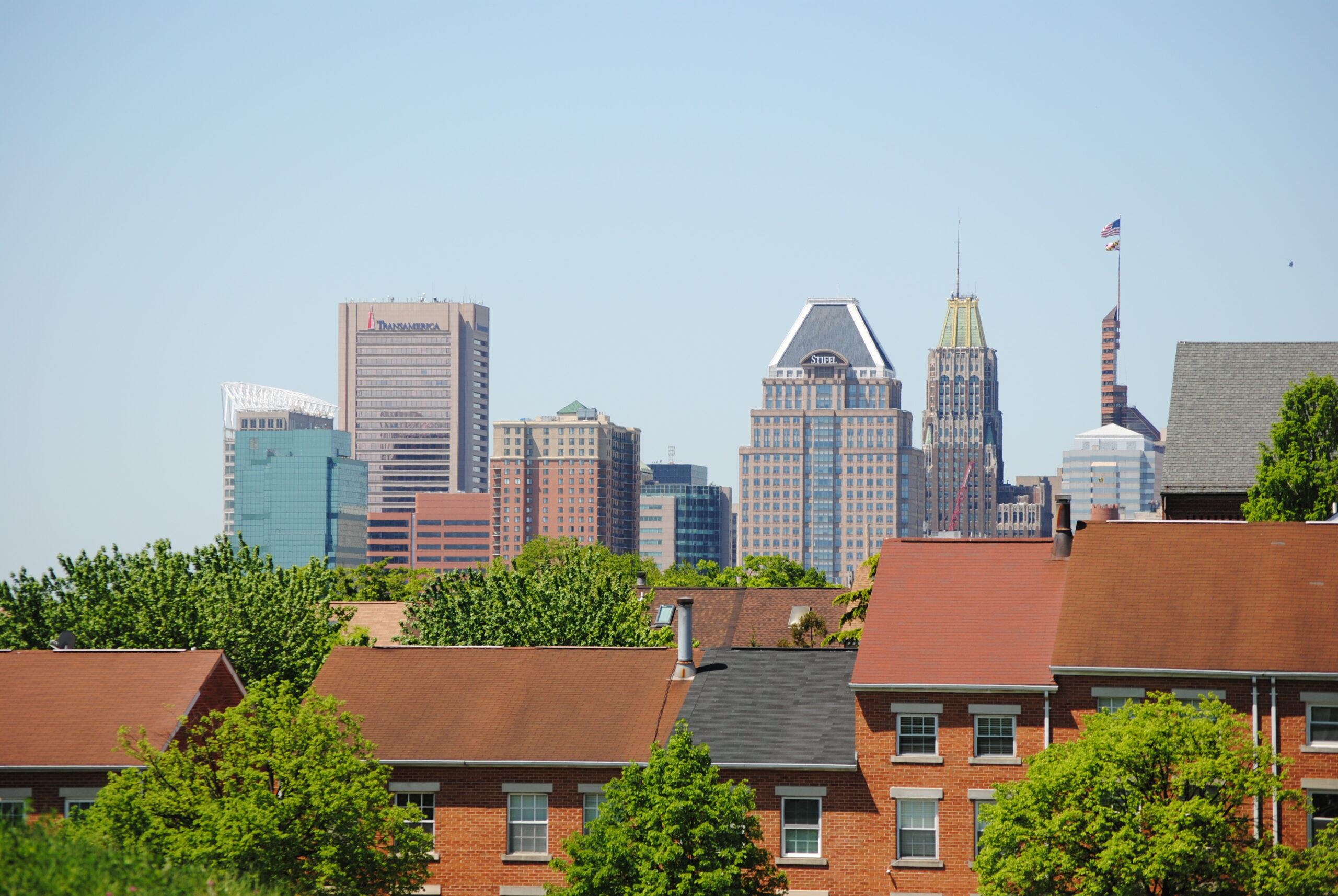As I stated in the first installation of “There’s Charm in Quirky,” the vast diversity of Baltimore wasn’t revealed to me until I moved back in adulthood. I also noticed another interesting quirk about Charm City—the green space.
When you think “Rust Belt,” trees and parks don’t exactly come to mind. Scenes of train cars filled with raw materials announcing their arrival with blaring whistles and a thunderous roar down metal railroad tracks, factories with smokestacks puncturing the horizon along the harbor, and the rumble of passing machines paint a picture of the industrial age when gears, bricks, and urbanization held rule. While this is a romantic image of Baltimore as a center of industrialization, the city today is actually quite green.
 Baltimore City is home to 4,000 acres of parkland and public space and sports 300,000 street trees—that’s not including all the trees within the parks! Many city blocks have enough trees to offer shade from one end to the other. Not only do large Baltimore parks provide beautiful scenery—they also provide recreational spaces for running, biking, and hiking.
Baltimore City is home to 4,000 acres of parkland and public space and sports 300,000 street trees—that’s not including all the trees within the parks! Many city blocks have enough trees to offer shade from one end to the other. Not only do large Baltimore parks provide beautiful scenery—they also provide recreational spaces for running, biking, and hiking.
Druid Hill Park, the largest park in the city, is a runner’s delight. The park surrounds Druid Lake, where you can run laps, take in views of the Baltimore skyline (looking south), or take a visit to the Maryland Zoo or Rawlings Conservatory and Botanical Gardens. For East Baltimoreans, Patterson Park is an urban oasis of green space. Sandwiched between East Baltimore Street and Eastern Avenue, Patterson Park offers visitor baseball fields, a dog park, Boat Lake (great for bird enthusiasts), a pool, and of course, loads of trees and greenery.
A personal favorite, Wyman Park, is a thin sliver of green space sitting between Johns Hopkins Homewood Campus, Hampden, and Remington. In this park, one almost forgets that they are in a mid-sized U.S. city, however, hints of civilization do peak out along the dirt trail and through the trees in forms of graffiti covered bridges, tunnels, and the occasional passing car on Remington Avenue. Here you’ll find runners and mountain bikers, glimpses of Hampden row homes and Johns Hopkins Homewood buildings, meditation groups along the creek, the occasional photographer, and a puppy or two at the heels of its owner.
Despite these large stretches of trees and parks, Baltimore is getting greener. Baltimore Green Space community gardens are springing up in empty lots where neighbors can grow vegetables side-by-side. The Friends of Patterson Park work to maintain green space and every Arbor Day the group gets together to plant new trees. Cylburn Arboretum grows plants to be used throughout the city and hosts programs on nature education and the art of horticulture.
Don’t worry, Johns Hopkins University also has a few tricks up its sleeves.
From day one, the Johns Hopkins Office of Sustainability instills a “Think Hopkins Eco-Smart” mentality into new Blue Jays. We not only need to expand green space, but sustain it and that starts with each of us living healthier, greener lives. Through composting and recycling waste-reduction campaigns “Bring Your Own Mug” and The Green Team Network, the Office of Sustainability has been able to rally the JHU community to enhance the school’s positive impact on the environment. They even help support Johns Hopkins’ own green space, The Blue Jay’s Perch, a community garden by the Eastern Campus on East 33rd Street.
The University as a whole is even doing its part to help Baltimore’ air become a little cleaner. In 2008, Johns Hopkins University made it a goal to reduce greenhouse emissions by 51 percent by 2025. It’s 2017, and we’ve already reached 35 percent. State-of-the-art efficient buildings like the Undergraduate Teaching Labs and campaigns to “shut the sash” reduce the energy consumed by the Johns Hopkins community and create a more Hopkins Eco-Smart mindset among employees, faculty, and students.
While the gardens, parks, and greenery provide beautiful  scenery to the mechanized remnants of Baltimore, they’re also giving life – to you! As a nurse or a prospective nursing student, you think “health first.” You want healthy patients, healthy communities, and a healthy city. It’s in your nature! (See what I did there?)
scenery to the mechanized remnants of Baltimore, they’re also giving life – to you! As a nurse or a prospective nursing student, you think “health first.” You want healthy patients, healthy communities, and a healthy city. It’s in your nature! (See what I did there?)
One of the most efficient ways to ensure a healthy community is by ensuring there is enough green space. Think about it—trees produce oxygen. This increases air quality, reduces temperature and the urban heat island effect, and green spaces provide areas for local gardeners to grow food for a healthier diet. Better air quality reduces respiratory ailments. Lower temperatures reduce the risk of heat stroke, exhaustion, and other heat-related illnesses. Local gardens provide healthier foods which helps to fight obesity and diabetes.
Now there are certain sections of the city where cement still holds rule, but the winds are changing. Communities are banding together to produce greener spaces in their own neighborhoods and to protect the spaces that already exist. Johns Hopkins students and staff volunteer time for cleanups and tree planting while neighborhood organizations like the Hampden Community Council hosts its monthly outing with the catchy name of “Getting Trashed on Tuesdays,” a community hour to pick garbage and keep Hampden clean. While Baltimore will never be a forest occupied by 623,000 people, we can still make it a greener, more sustainable, and healthier place to live.
Remember: Green is good. Green is healthy.
About the Author: CRAIG LEE
 With the world becoming more connected through tweets, posts, shares, and pins, Craig keeps the School of Nursing in the mix with the ever-growing, complex web of social media. Craig manages all JHSON social media accounts, serves as an editor of SONvitals, and contributes to On The Pulse.
With the world becoming more connected through tweets, posts, shares, and pins, Craig keeps the School of Nursing in the mix with the ever-growing, complex web of social media. Craig manages all JHSON social media accounts, serves as an editor of SONvitals, and contributes to On The Pulse.
